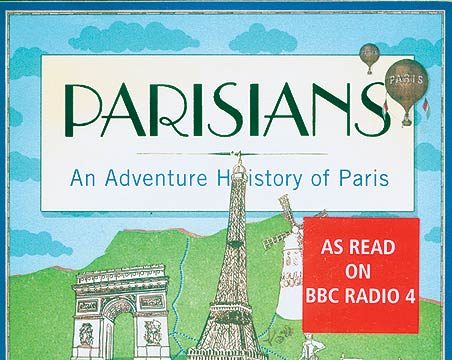Paris, the place, is inevitably upstaged by Gay Paree, that heady cloud of romantic pop-culture projections and literary-and-art lore. The chasm between the imagined utopia of cobblestone streets, and the pigeon-poop and casual racism that actually forms a part of the current-day Paris experience famously produces the ‘Paris Syndrome’, which has unravelled many a hapless Japanese tourist. The unpretty present — in the shape of the 2005 Paris riots, a certain suburban-”scum”-hating diminutive former Interior Minister, and his violent minions — is the subject of one among 20 compelling historic vignettes in ardent Francophile Graham Robb’s latest publication. Robb points out that the present-day discrimination against residents of the Paris suburbs has a historical parallel. In the Middle Ages, the peripheries were associated with the dangerous and infected: unfettered sewage; executions; highwaymen.
In his eloquent account of the thoughtless bulldozing of old Paris during its Haussmanianization in the 1860s, Robb suggests we suffer, retroactively, a bout of Paris Syndrome of the heart; near-guaranteed by his description of photographer Marville’s work, which recorded all that was destroyed. “Here at the dawn of the visible past, the buildings look almost radiant in their grime, as though they haven’t yet learned how to pose for a camera.”
This is what sets Robb apart: his ability to dust off footnotes from old history books and revivify them into stirring narratives. He accompanies the “young lieutenant” Napoleon on a single night he spent with a prostitute in the “vortex of dissipation” that was the Grand Palais gardens, and presents architect Charles-Axel Guillaumot’s macabre solution for saving Paris from collapsing into the caverns formed during its construction. He notes the part that “effectively uncharted” Paris played in making Marie Antoinette and Louis XVI irretrievably doomed when they tried to escape confinement, and depicts the unhurried quality of time, which Proust portrayed in his work, that would be rapidly sped up and altogether lost in the technological progress taking place during his lifetime.
Robb’s deployment of the devices of fiction divine new lyrical depths in old stories. He presents, in nouvelle-vague screenplay form, the romance between the lynx-eyed singer Juliette Greco and jazz legend Miles Davis. The book’s standout chapter, ‘A little tour of Paris’, is a chilling yet somewhat wry account of sculptor Arno Breker showing the Führer the architectural sights of an emptied-out Occupied Paris. “The emptiness of the esplanade and the quais below looked strange and ominous. No barges passed on the river, and no sounds came from the city other than the whispered exhalation of an urban expanse.”
There is, however, the rare instance in which Robb’s experimentation doesn’t pay off — for instance, when he casts the May ‘68 student and unions revolt in sociology textbook format, with a set of questions-and-answers to round off every ‘chapter’. Not only does this feel contrived; it also throws into relief the pabulum-for-Francophiles aspect of the book, which it flirts with throughout, but never quite descends to.




